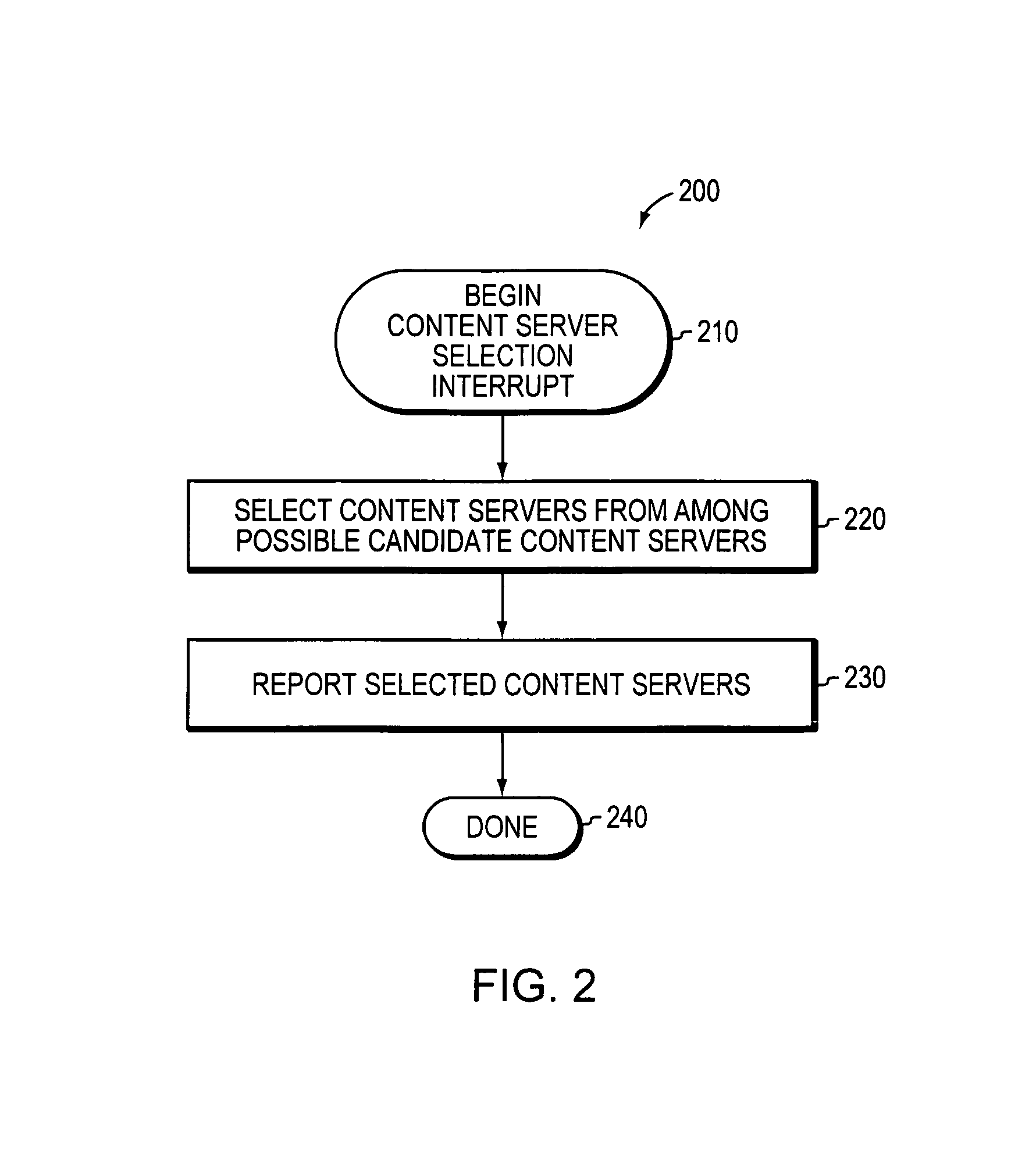Content server selection for accessing content in a content distribution network
a content server and content technology, applied in the direction of instruments, digital computers, computing, etc., to achieve the effect of keeping the load on the network and small collection of dynamic network information
- Summary
- Abstract
- Description
- Claims
- Application Information
AI Technical Summary
Benefits of technology
Problems solved by technology
Method used
Image
Examples
Embodiment Construction
[0026]Before discussing details of the preferred embodiments, a brief overview is presented. In a typical networking scenario, a routing subsystem of a CDN is presented with a request to translate a DNS name from a DNS (Domain Name System) proxy. The DNS name identifies a “routed domain” (RD): some content that is being replicated in the CDN. The DNS proxy might be one that the routing subsystem has dealt with before, or the DNS proxy might be new to the routing subsystem. In either case, it is desirable in large networks, such as the Internet, to route the DNS proxy to a content server that is reasonably close to the DNS proxy. More specifically, the system attempts to achieve the following goals:
[0027]1. For a known DNS proxy, the routing server selects a content server that is really good for the DNS proxy, e.g., in the top 10% of possible choices for that proxy and the requested routed domain.
[0028]2. For an unknown DNS proxy, the routing server makes a good selection (i.e., avo...
PUM
 Login to View More
Login to View More Abstract
Description
Claims
Application Information
 Login to View More
Login to View More - R&D
- Intellectual Property
- Life Sciences
- Materials
- Tech Scout
- Unparalleled Data Quality
- Higher Quality Content
- 60% Fewer Hallucinations
Browse by: Latest US Patents, China's latest patents, Technical Efficacy Thesaurus, Application Domain, Technology Topic, Popular Technical Reports.
© 2025 PatSnap. All rights reserved.Legal|Privacy policy|Modern Slavery Act Transparency Statement|Sitemap|About US| Contact US: help@patsnap.com



